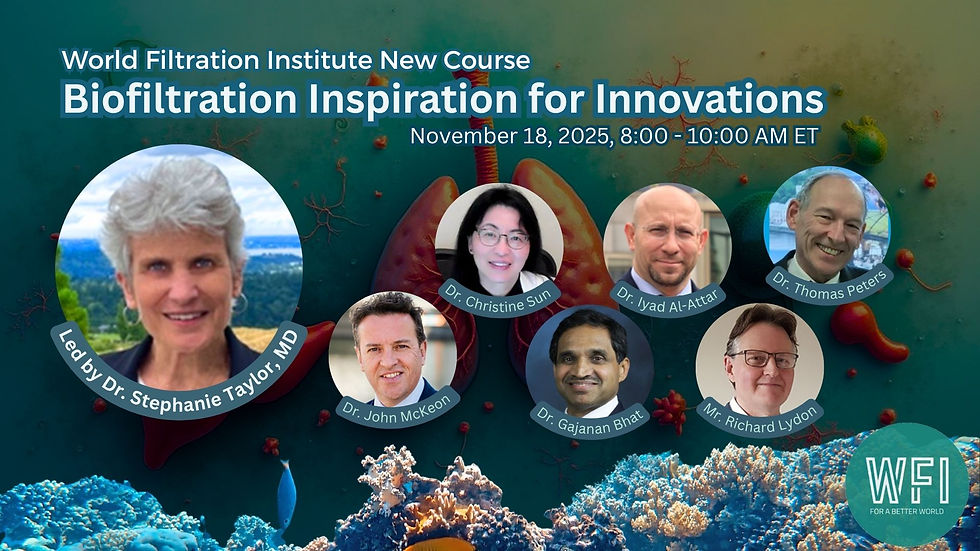Center of Excellence in Protective Equipment and Materials
- Camilla Gomes da Silva

- Oct 14, 2020
- 2 min read
In an effort to connect our presenters with the participants, WFI is launching a series of posts to reveal what you can expect at our conference. In this issue, we are very proud to present Dr. Ravi Selvaganapathy and his topic at WFI 2020.
Dr. P. Ravi Selvaganapathy is a Professor of Mechanical and Biomedical Engineering at McMaster University and the Canada Research Chair in Biomicrofluidics. His research interests are in microfluidic devices for environmental and medical diagnostics, drug discovery, artificial organs and protective materials. He has more than 20 years of extensive experience in micro-manufacturing, microfluidics and materials development, which has resulted in ~120 journal publications, 60 conference publications, 35 invited talks and 8 patents. His research has won several best paper awards and highlighted on journal covers. He won the Early Researchers Award in 2010 and has been named as a Rising Star in Global Health in 2012 and has received the Canada Research Chair Award two times in 2011 and 2016. He is the founding director for the Center of Excellence in Protective Equipment and Materials, which has been established to support research and development for this nascent industry in Canada.
Abstract of Dr. Selvaganapathy Presentation:
Center of Excellence in Protective
Equipment and Materials
The current COVID-19 pandemic caught Canada on a flat foot. The country did not have sufficient local manufacturing capability nor testing and validation facilities to respond quickly when supply chains across the world shut down. In this talk, I will describe one of Canada’s most comprehensive responses in assisting local manufacturing and establishment of a test facility that has enabled local manufacturers of apparel, automotive components, and construction to pivot to the manufacture of personnel protective equipment (PPE). In assisting these companies, broad outlines of an integrated research and development program were realized, which led to the establishment of the Center of Excellence in Protective Equipment and Materials (CEPEM) as a one of a kind facility in Canada. The COVID19 pandemic and its aftermath have significantly changed how PPEs are used. These changes in use call for a significant redesign of PPEs as well as the development of new materials and manufacturing processes suited for further use cases. There is also a need for the development of specific and custom standards for the evaluation of PPEs in these settings. Finally, natural and sustainable materials need to be incorporated into PPEs instead of fossil fuel-derived materials in order to reduce the impact of their increased use. All of these considerations are interrelated, and a comprehensive research program is required to address all aspects of this problem. In this talk, I will provide some examples of such an integrated approach to the development of PPEs.



